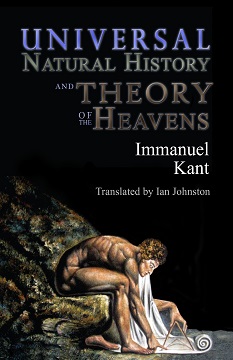Questions? Call us toll free:
1-800-856-3060
At Richer Resources, we are dedicated to the creation of high quality books, art and other media intended to enrich the lives of individuals of all ages.
As an independent publisher, we are bound by a sense of integrity and quality to produce products which enhance the lives and vision of individuals everywhere.
Sign up to receive notice of free eBooks, new releases and special subscriber-only offers.
(You can unsubscribe at any time)
We have made this book available to you for previewing. Clicking on the front cover of the book image to the left will open this book up into a flipbook format which can be read online.
You must have Adobe Flash to open this file. If you do not have Adobe Flash on your computer, you download it free from Adobe here.
Classics/ Philosophy ISBN:
978-1-935238-91-1
USD $14.95
Universal Natural History and Theory of the Heavens by Immanuel Kant
Translated by Ian Johnston
Using Isaac Newton’s mathematical principles and laws of
motion and taking up an idea first suggested by Emanuel Swedenborg,
Immanuel Kant, the greatest philosopher of the eighteenth century, in
1755 produced a detailed account of what has come to be known as the
Nebular hypothesis, still considered the most plausible explanation for
the formation of the solar system: the structure of the universe
develops from widely dispersed materials scattered throughout space
which, under the influence of the forces of attraction and repulsion,
rotate, flatten, and over time produce stars and planets. In his
account, Kant also considers the ring of Saturn, the formation of moons,
and other celestial phenomena (like the axial rotation of the planets
and the development of comets). He also lets his imagination run rampant
in a fascinating exploration of what living creatures must be like on
other planets.
The extent to which Kant fully understood the mathematical complexities
involved in his explanation has been strongly challenged, but, for all
that, his account is an important document in the most important trend
of natural science in the eighteenth century, that is, placing
scientific accounts of natural phenomena on a historical basis and
seeing them as the result of a process of development maintained by
mechanical forces (a revolutionary trend which culminates a century
later in the work of Charles Darwin). In this way, while honouring
Newton’s achievement, Kant is also issuing a direct challenge to it.
Kant’s work also offers an enthusiastic defense of the design argument
(that the harmonies in the design of the solar system are the best
physical evidence we have for the existence of God), a claim which,
ironically enough, his later philosophy would do so much to undermine.
